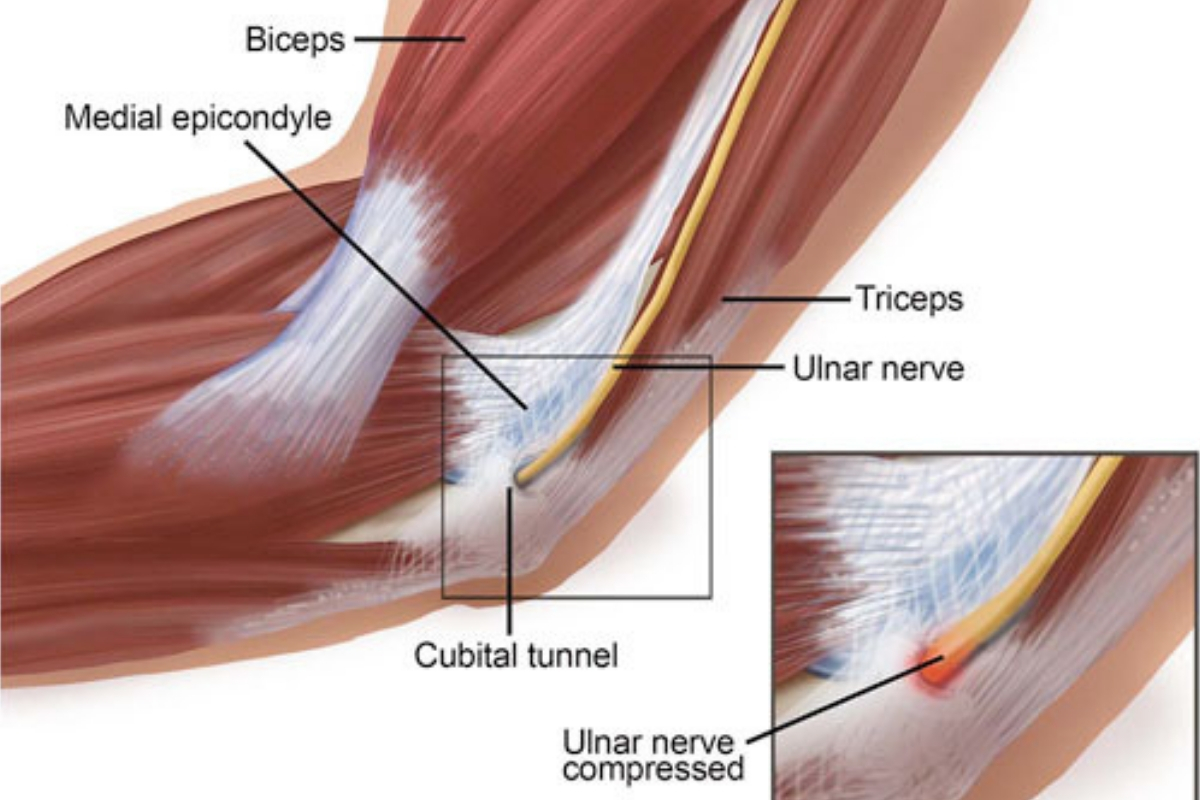Do you require any assistance? Simply reserve your appointment online below
Cubital Tunnel Syndrome
Find relief from debilitating pain
Cubital Tunnel Syndrome is a condition that involves pressure or stretching of the ulnar nerve (also known as the “funny bone” nerve), which can cause numbness or tingling in the ring and small fingers, pain in the forearm, and/or weakness in the hand. The ulnar nerve runs in a groove on the inner side of the elbow.
The hand and wrist specialists at NSOC are among the most experienced surgeons in Kenya for treating cubital tunnel syndrome in a minimally invasive manner first to ease your pain and discomfort.

What are the symptoms of cubital tunnel syndrome?

Symptoms of cubital tunnel syndrome include:
Pain in the small and ring fingers
Loss of fine motor skills in the hand (for example, difficulty buttoning one’s shirt)
Numbness and tingling in the small and ring fingers
Loss of strength in the hand
Causes of cubital tunnel syndrome
Excessive compression of the ulnar nerve causes it to stretch and become impaired. Most cases have no identifiable cause.
Symptoms can worsen when a person spends a lot of time leaning on their elbow or bending the elbow for prolonged periods.
Cubital tunnel syndrome may also result from abnormal bone growth in the elbow or from intense physical activity that increases pressure on the ulnar nerve, such as throwing a baseball.
Arthritis, bone spurs, and previous fractures or dislocations of the elbow can also cause cubital tunnel syndrome.
Diagnosis
The orthopedic surgeons at the NSOC carefully examine a patient’s arm to determine whether cubital tunnel syndrome is present.
Nerve tests, called electromyography (EMG) or a nerve conduction study (NCS), will be recommended to measure the function of the ulnar nerve. During an EMG test, tiny wires are inserted into muscles to measure the electric nerve response while the muscles are resting and contracted.
During an NCS test small metal plates are taped to the skin and emit an electrical charge to measure how well and fast the nerves are sending electrical signals.

What are the treatments for cubital tunnel syndrome

Non surgical treatment
Unless your nerve compression has caused a lot of muscle wasting, your doctor will most likely first recommend nonsurgical treatment.
Most cases can be treated by:
- Taking anti-inflammatory medications, such as ibuprofen
- Using an elbow splint for sleep
- Using an elbow pad while working or during certain activities
- Activity modification
Improve mobility
Surgical treatment
Surgery to relieve pressure on the ulnar nerve is necessary only in more advanced cases of cubital tunnel syndrome.
One surgical option is to remove part of the medial epicondyle, which can relieve pressure on the ulnar nerve. Another surgical procedure involves releasing the nerve or moving it to the front of the elbow where it is not as exposed to tension when the elbow is flexed.
Hand and wrist surgeons in Kenya at NSOC use new, minimally invasive methods to treat cubital tunnel syndrome when surgery is necessary.

